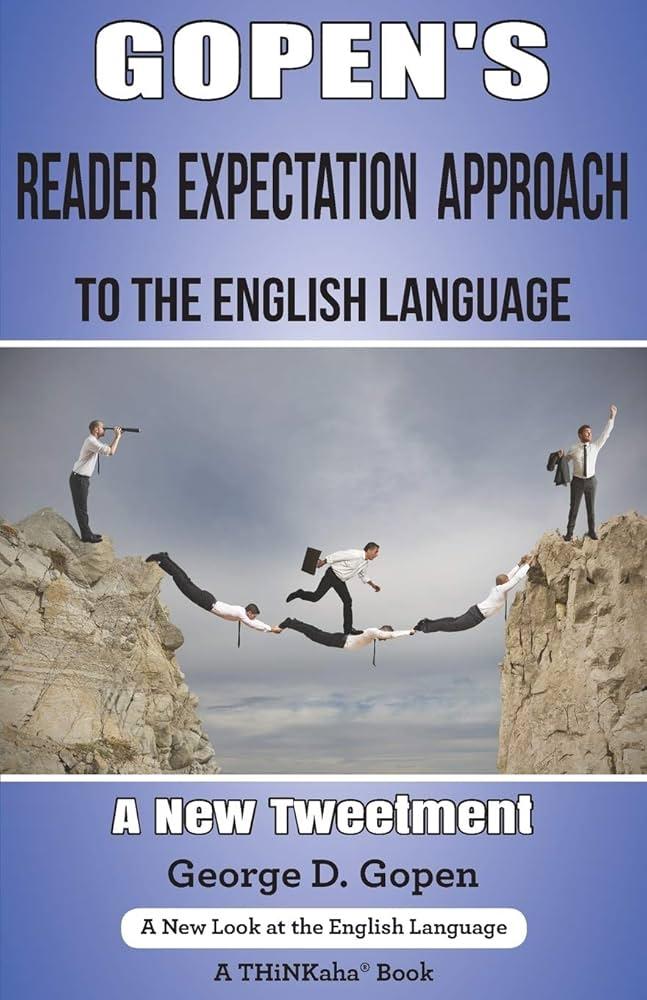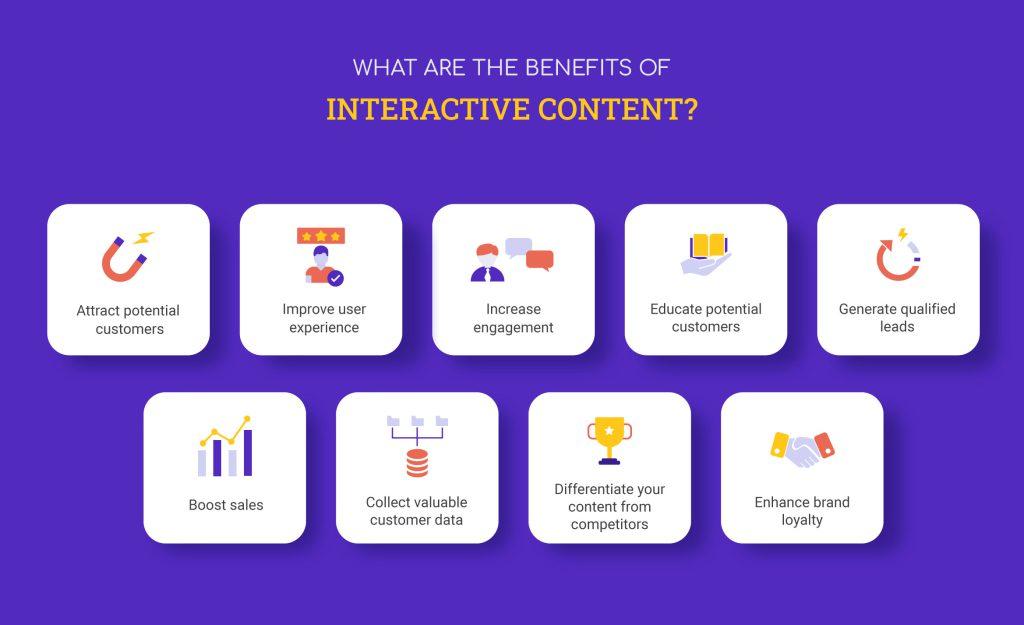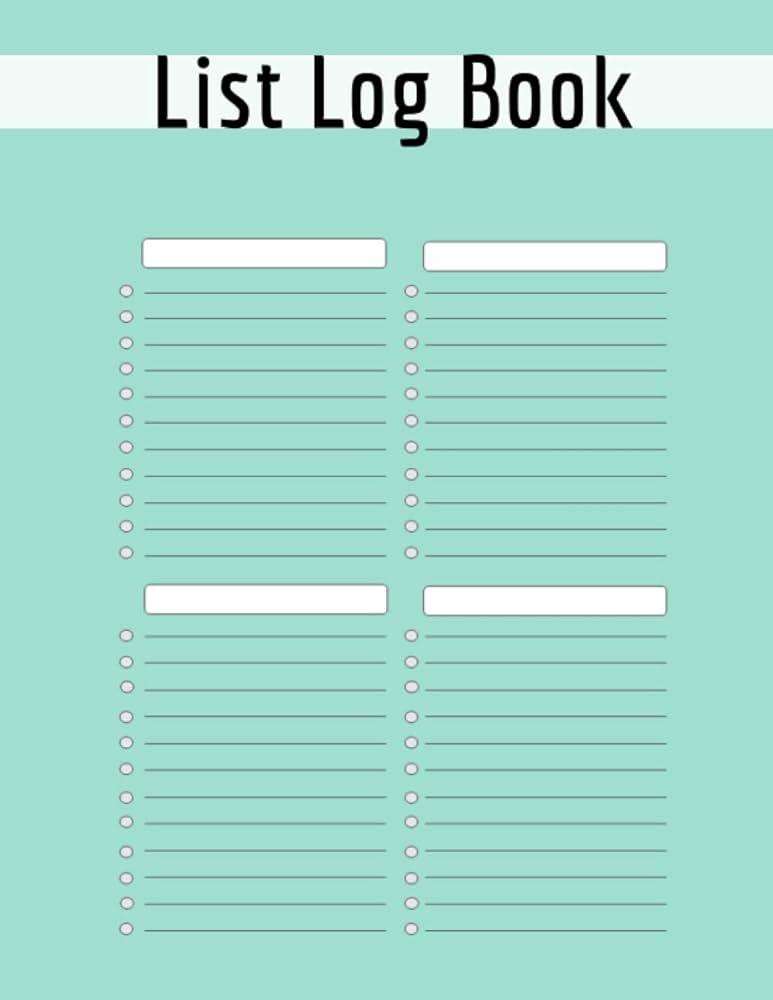Many blog post checklists are stuck in the past, focusing on SEO keywords and basic formatting. But today’s readers crave authenticity and engagement. Instead, prioritize storytelling, visuals, and interactivity to truly connect and captivate your audience!
Why Most Blog Post Checklists Are Outdated (And What To Do Instead)
Why Most Blog Post Checklists Are Outdated (And What To Do Instead)
Let’s face it: the blogging landscape is changing faster than ever, and clinging to outdated checklists is like trying to navigate a bustling city with a paper map from the 90s. If you’ve ever followed a standard blog post checklist, you might have noticed that while it helps you tick off the basics, it often falls short of sparking engagement or inspiring action. In a world where readers’ attention spans are shorter than a TikTok video, relying on cookie-cutter approaches just won’t cut it anymore. So, what’s the alternative? In this article, we’ll dive into why those familiar checklists are lagging behind and explore fresh, innovative strategies to supercharge your blogging game. By the end, you’ll be equipped with actionable insights that not only enhance your writing but also resonate deeply with your audience. Ready to step into the future of blogging? Let’s get started!
Why Standard Checklists Fall Short in the Modern Blogging Landscape
In the fast-paced world of blogging, relying on standard checklists can hinder your creativity and adaptability. While these checklists often cover the basics, they tend to overlook the nuanced elements that make a blog post truly resonate with readers. Here are some reasons why traditional checklists may not cut it anymore:
- Static vs. Dynamic Content: The blogging landscape is constantly evolving. What worked a year ago might be irrelevant today. Standard checklists often remain static, failing to evolve with changing trends and audience preferences.
- Generic Advice: Many checklists provide one-size-fits-all solutions. This approach can lead to bland content that lacks a unique voice or perspective. Your blog deserves to stand out, and that requires a more personalized strategy.
- SEO Changes: Search engine algorithms are always shifting, and so should your approach to SEO. Relying on outdated checklist items can limit your visibility and engagement.
- Engagement Metrics: Standard checklists often neglect the importance of audience engagement. Metrics like comments, shares, and time spent on the page are crucial indicators of success that aren’t always included.
Moreover, traditional checklists often miss the mark on the emotional connection your content can forge with readers. Here’s why this emotional element is vital:
| Checklist Item | Emotional Connection |
|---|---|
| Keyword Optimization | Focus on storytelling that resonates with your audience. |
| Length of Content | Prioritize quality and depth over merely hitting a word count. |
| Image Use | Incorporate visuals that evoke emotion, not just filler. |
To truly make your mark in the blogging realm, you need to go beyond the basics. It’s essential to develop content that not only informs but also engages and inspires. Think about how you can:
- Incorporate Personal Experiences: Share your own journey and insights to create authenticity.
- Utilize Interactive Elements: Engage readers with polls, quizzes, or comment prompts.
- Adapt to Audience Feedback: Be willing to pivot your content strategy based on what resonates with your audience.
the modern blogging landscape demands a fresh perspective that transcends outdated checklists. By focusing on authentic engagement and continuously adapting to your audience’s needs, you can create blog content that not only stands out but also builds lasting connections.

The Shift in Reader Expectations: What Today’s Audience Really Wants
In today’s fast-paced digital landscape, readers have evolved, and so have their expectations. Gone are the days when a simple checklist could guarantee engagement. Today’s audience craves more than just the basics—they seek a deeper connection, authenticity, and value in every piece of content they consume.
Consider the following key aspects that define the modern reader’s expectations:
- Authenticity: Readers are drawn to genuine voices. They want to know the real you behind the blog. Sharing personal experiences or insights can create a bond that resonates more deeply than generic advice.
- Value-Driven Content: It’s no longer sufficient to just fill a post with keywords. Each article should provide actionable insights, practical tips, or unique perspectives that address the specific needs of the audience.
- Engaging Formats: With the rise of multimedia, incorporating videos, infographics, and interactive elements can significantly enhance user experience. Readers appreciate content that is visually appealing and easy to digest.
- Community Interaction: Today’s audience values interactivity. Encouraging comments and feedback, and responding promptly fosters a sense of community and belonging—elements that keep readers coming back.
Moreover, the structure of your content matters more than ever. A well-organized piece that flows logically will keep readers engaged longer. This means breaking up large blocks of text, using headers strategically, and incorporating bullet points or tables to present essential information clearly.
| Reader Expectation | Actionable Strategy |
|---|---|
| Authenticity | Share personal stories and insights |
| Value-Driven Content | Offer actionable tips and resources |
| Engaging Formats | Use visuals and multimedia |
| Community Interaction | Encourage comments and discussions |
Ultimately, shifting your approach to meet these evolving reader expectations will not only enhance engagement but also build trust and loyalty. By prioritizing authenticity, value, interactive formats, and community, you’ll create content that resonates and keeps your audience coming back for more.
Outdated SEO Practices: Adapting to New Algorithms for Better Visibility
In the ever-evolving landscape of digital marketing, staying ahead of the game means adapting to the latest SEO practices. Many blog post checklists still reference techniques that were once effective but have since become ineffective or even detrimental due to recent algorithm updates. Relying on outdated methods can hinder your visibility and engagement. Here are some key areas where traditional checklists often fall short:
- Keyword Stuffing: Once a common practice, cramming posts with keywords now results in penalties from search engines. Instead, focus on semantic search and natural language processing. This means using related keywords and phrases that enhance the context of your content.
- Overemphasis on Backlinks: While backlinks are still important, the quality of links is now prioritized over quantity. Aim for authoritative sources within your niche that align with your content’s value.
- Ignoring Mobile Optimization: With mobile-first indexing, neglecting mobile optimization can severely impact your ranking. Ensure your blog is fully responsive and provides a seamless user experience on all devices.
- Neglecting User Experience: Modern algorithms prioritize user engagement metrics like bounce rate and time on page. Focus on creating high-quality, valuable content that encourages readers to stay and interact.
Another significant shift is the rise of structured data. Implementing schema markup enhances your content’s visibility in search results, providing rich snippets that can attract more clicks. This is an area that many traditional checklists fail to address adequately, leaving your posts without the potential benefits of enriched search appearances.
Here’s a quick comparison of some outdated practices versus their modern equivalents:
| Outdated Practice | Modern Approach |
|---|---|
| Keyword Stuffing | Natural Language and Contextual Keywords |
| Quantity of Backlinks | Quality and Relevance of Backlinks |
| Static Content | Dynamic and Interactive Content |
| Desktop-focused Design | Mobile-First Design |
Embracing these new strategies not only helps in improving your blog’s search engine ranking but also fosters trust and engagement with your audience. Create content that resonates, and stay updated with algorithm changes to maintain your blog’s relevance. It’s time to put away outdated checklists and adopt practices that align with the current digital environment.

The Importance of Authenticity: Connecting with Your Audience on a Deeper Level
In today’s digital landscape, where cookie-cutter approaches often dominate the blogging scene, authenticity emerges as a game-changer. Readers are becoming increasingly adept at spotting insincerity, and they crave genuine connections with the content they engage with. To stand out, it’s essential to infuse your personality and unique perspective into your writing. This creates an emotional bond that resonates deeply with your audience, making them more likely to return for more.
When you write authentically, you invite your readers into your world, allowing them to relate to your experiences, challenges, and triumphs. This relatability fosters trust, which is crucial for building a loyal readership. Here’s how you can cultivate authenticity in your blogging:
- Share Your Story: Don’t shy away from personal anecdotes; they can humanize your brand and provide context to your ideas.
- Be Transparent: Openness about your journey, including struggles and mistakes, can enhance your credibility.
- Engage with Your Audience: Respond to comments and feedback, creating a two-way conversation that values your readers’ input.
- Stay True to Your Values: Write about topics that genuinely interest you, rather than what you think will attract clicks.
Furthermore, authenticity isn’t just about what you say—it’s also about how you say it. Your writing style should reflect your voice. Whether it’s casual, humorous, or serious, your tone plays a pivotal role in how your message is received. Consistency in tone builds familiarity, making readers feel like they are connecting with a friend rather than just an anonymous author.
Here’s a quick comparison of traditional blog strategies versus authenticity-driven approaches:
| Traditional Strategies | Authenticity-Driven Approaches |
|---|---|
| Generic content that follows trends | Unique insights and perspectives based on personal experience |
| Focus on keyword stuffing | Natural use of relevant keywords while maintaining a conversational tone |
| Strict adherence to checklists | Flexibility to adapt content based on audience feedback |
Ultimately, the goal of authentic writing is to foster a community around your blog. When readers feel connected, they are more likely to engage with your content, share it within their networks, and return for future posts. This cycle not only boosts your visibility but also establishes a sense of belonging for your readers, allowing them to feel like they are part of something larger. Embrace authenticity, and watch your audience grow in ways that traditional tactics simply can’t achieve.
Leveraging Multimedia: Enhancing Engagement Beyond Text
In an age where attention spans are dwindling and readers are bombarded with information, relying solely on text to convey your message is no longer sufficient. To truly capture your audience’s attention and enhance engagement, you need to embrace the power of multimedia. By incorporating various forms of media into your blog posts, you can make your content not only more attractive but also more impactful.
Consider integrating:
- Images: High-quality images can break up long blocks of text and provide visual context, making your posts more digestible. Use eye-catching graphics that complement your message, and don’t forget to optimize them for SEO!
- Videos: Videos engage readers in a different way, allowing them to absorb information through sight and sound. A short, informative video can explain complex ideas more clearly than text alone.
- Infographics: These combine data and visuals, making them perfect for conveying statistics or processes quickly. A well-crafted infographic can enhance understanding and retention.
- Audio Clips: Consider adding short audio snippets for readers who prefer listening. Podcasts or audio summaries can reach a different segment of your audience.
Moreover, the strategic use of multimedia can also enhance the overall user experience on your site. For instance, adding interactive elements such as quizzes or polls can transform a passive reading experience into an active one. Your readers will be more likely to engage with your content and share it with others, expanding your reach.
To ensure your multimedia elements are effective, think about the following:
- Relevance: Always choose multimedia that aligns with your content. Irrelevant images or videos can confuse readers and detract from your message.
- Accessibility: Make sure that all users, regardless of ability, can experience your multimedia elements. Provide captions for videos and alt text for images.
- Loading Times: Optimize your media files to prevent slow loading times, which can deter readers from staying on your page.
When executed correctly, blending multimedia with your text can create a dynamic reading experience. This strategy will not only keep your audience engaged but can also improve your site’s SEO, making it more likely for new readers to discover your work. So, the next time you draft a blog post, think beyond the written word—your audience will thank you for it!

Analytics Over Assumptions: Using Data to Drive Your Content Strategy
In today’s digital landscape, relying solely on gut feelings to shape your content strategy can lead to missed opportunities and wasted resources. Instead, shifting your focus to data-driven insights can transform how you approach your blog posts. Embracing analytics allows you to understand what resonates with your audience, informing your content creation and ensuring you’re meeting their needs effectively.
One of the most significant advantages of using data is the ability to identify trends and patterns. For instance, analytics can reveal:
- Popular topics: Discover which subjects are generating the most engagement.
- Peak engagement times: Learn when your audience is most active and tailor your posting schedule accordingly.
- User demographics: Understand who your readers are, enabling you to create targeted content that speaks directly to them.
Instead of adhering to a generic checklist that may not fit your current audience or industry trends, consider using tools like Google Analytics, social media insights, and keyword research platforms. These resources can provide a treasure trove of data that informs your strategy. For example, a simple analysis might reveal a spike in interest in a specific topic, prompting you to create content that capitalizes on that momentum.
To illustrate the power of analytics, take a look at the table below, which outlines the differences between outdated checklist items and data-driven alternatives:
| Outdated Checklist Item | Data-Driven Alternative |
|---|---|
| Keyword stuffing | Natural keyword integration based on search intent |
| Generic headlines | Headline experimentation based on A/B testing results |
| Standard post length | Optimal length based on audience engagement metrics |
| One-size-fits-all content | Segmented content tailored to different audience personas |
Moreover, regularly reviewing your analytics not only helps refine your existing content strategy but also sparks new ideas. By monitoring user behavior, you may find opportunities for follow-up posts, deeper dives into popular topics, or entirely new content themes that align with evolving interests.
transforming your content strategy from assumption-based to analytics-driven is essential in this fast-paced digital arena. By prioritizing data, you’re not just creating content; you’re crafting experiences that truly resonate with your audience. So ditch the outdated checklists and start leveraging the power of analytics today!

The Rise of Interactive Content: How to Keep Readers Coming Back
In today’s digital landscape, traditional blog content is often no longer enough to retain reader engagement. Audiences are becoming increasingly accustomed to interactive experiences that stimulate their curiosity and encourage participation. This shift in preference has paved the way for various forms of interactive content that not only entertain but also educate and inform.
So, what types of interactive content can you incorporate into your blog? Here are some effective options:
- Quizzes and Polls: Tailored quizzes can provide personalized results, making readers feel more invested. Polls can engage your audience by inviting them to share their opinions.
- Infographics: Visually appealing infographics that allow readers to click and learn more about specific data points can enhance understanding and retention.
- Interactive Maps: If your content relates to locations or travel, consider using maps that readers can explore with just a click.
- Videos with Interactive Elements: Videos that allow viewers to choose their path or answer questions can keep them engaged longer.
Implementing these types of content not only boosts engagement but also increases the chances of shares and backlinks. Consider this: a recent study showed that articles featuring interactive content have a 50% higher engagement rate than those that do not. This simple shift can lead to significant improvements in your blog’s visibility and authority.
Moreover, interactive content can enhance the user experience by clearly demonstrating the value you provide. Readers are more likely to return to a blog that offers something beyond just text. By creating unique and dynamic experiences, you can cultivate a loyal audience base that looks forward to your content.
| Type of Interactive Content | Benefits |
|---|---|
| Quizzes | Increased engagement; personalized experience |
| Infographics | Visual appeal; easy sharing |
| Interactive Maps | Exploratory engagement; informative |
| Videos | Higher retention; versatile storytelling |
Moving forward, it is essential to adapt your content strategies to meet the evolving expectations of your readers. With the right mix of interactive elements, you can not only keep your audience engaged but also establish your blog as a go-to resource in your niche.

Embracing Flexibility: Tailoring Your Checklist for Different Topics and Formats
In today’s fast-paced digital landscape, a rigid checklist can hinder creativity and adaptability. To truly connect with your audience, it’s essential to customize your approach based on the topic and format of your blog post. Every niche has unique demands, and understanding these nuances will help you create content that resonates more deeply.
Consider the different types of content you might produce:
- How-to Guides: Focus on clarity and step-by-step reasoning. Your checklist should emphasize detailed explanations and engaging visuals.
- Opinion Pieces: Here, the checklist should encourage personal anecdotes and a strong, authentic voice to establish credibility and connection with readers.
- Listicles: For this format, the checklist should prioritize brevity and scannability—using bullet points and subheadings for easy navigation.
- Interviews: Highlight the importance of preparing thoughtful questions and ensuring a conversational tone to reflect the interviewee’s personality.
It’s not just the topic that matters; the format can significantly alter your checklist as well. For instance, a video blog might require a different set of elements compared to a traditional text post:
| Format | Checklist Elements |
|---|---|
| Text Post | SEO optimization, clear headings, engaging images |
| Video Post | Script outline, visuals, sound quality checks |
| Podcast | Episode structure, guest prep, audio quality |
By embracing flexibility, you can also incorporate real-time feedback from your audience. Use analytics and comments to refine your checklist continuously. What resonates with your readers can change, and so should your approach. Be receptive to trends and adapt your checklist accordingly, ensuring that each post is not just relevant but also engaging.
Ultimately, the goal is to craft a checklist that serves as a living document—one that evolves with your content and audience needs. If you treat your checklist as a flexible tool rather than a fixed rulebook, you’ll be better equipped to create compelling, high-quality content that stands out in a crowded market.

Creating a Dynamic Workflow: Collaborating for Consistent Quality
In today’s fast-paced digital landscape, creating a seamless workflow is crucial for maintaining high-quality content. Collaborating effectively allows teams to ensure that every piece of writing resonates with the audience while meeting both brand standards and the latest SEO guidelines.
Establishing a dynamic workflow involves fostering communication and adapting to the ever-evolving requirements of your audience. Here are some key strategies to consider:
- Regular Check-ins: Schedule frequent meetings or sync-ups to discuss progress and hurdles. This keeps everyone on the same page and encourages the sharing of ideas.
- Shared Tools: Utilize collaborative tools such as Google Docs or Trello. These platforms allow team members to contribute and edit in real time, streamlining the content creation process.
- Feedback Loops: Implement a structured feedback process where writers can receive constructive criticism and suggestions from peers, ensuring that each draft is polished and aligned with project goals.
Another critical aspect is to define clear roles within the team. When everyone knows their responsibilities, it minimizes confusion and maximizes productivity. Here’s a simple breakdown of roles that can enhance workflow:
| Role | Responsibility |
|---|---|
| Content Manager | Oversees the content strategy and ensures alignment with brand goals. |
| Writers | Create engaging and informative content based on outlines and guidelines. |
| Editors | Review, revise, and polish content to maintain quality and coherence. |
| SEO Specialist | Optimizes content for search engines and tracks performance metrics. |
Additionally, embracing flexibility within your workflow allows your team to adapt quickly to new trends or shifts in audience preferences. Whether it’s adjusting a content calendar or pivoting your narrative angle, agility can be a game changer in delivering fresh, relevant material.
Ultimately, exceptional content doesn’t stem from rigid checklists. It arises from a collaborative, adaptable, and creative process. By investing in a dynamic workflow, you empower your team to produce work that not only meets expectations but exceeds them, reinforcing your brand’s reputation and engaging your audience effectively.

Future-Proofing Your Blog: Staying Ahead of Trends and Technologies
When it comes to blogging, many creators still cling to traditional checklists that were once effective but have since become outdated. The digital landscape is evolving at breakneck speed, and relying on old methods can hinder your blog’s growth. To truly future-proof your content, it’s essential to embrace new strategies and tools that resonate with today’s audience.
Here are some innovative approaches to consider:
- Embrace Multimedia: Text alone isn’t enough anymore. Incorporating videos, podcasts, and infographics can significantly enhance reader engagement. Visual storytelling captures attention and keeps visitors on your page longer.
- Prioritize Mobile Optimization: With the majority of blog traffic coming from mobile devices, ensuring your content is mobile-friendly is no longer optional. Use responsive designs and test your site across various devices.
- Focus on Interactivity: Encourage reader interaction through polls, quizzes, and comment prompts. This not only increases engagement but also builds a community around your blog.
- Utilize SEO Beyond Keywords: Instead of just focusing on keywords, consider holistic SEO practices. This includes optimizing for voice search, improving site speed, and enhancing user experience.
- Stay Informed on AI Technologies: As AI continues to influence content creation and curation, familiarize yourself with AI tools that can streamline your writing process or provide insights into trending topics.
Moreover, understanding your audience is crucial. Utilize analytics tools to track user behavior and preferences. This data can guide your content strategy, ensuring you deliver what your readers want, when they want it. Consider the following table to evaluate your audience’s preferences:
| Content Type | Engagement Rate | Recommended Frequency |
|---|---|---|
| Blog Posts | 40% | 2-3 times/week |
| Videos | 70% | Once/week |
| Podcasts | 50% | Bi-weekly |
| Infographics | 60% | Monthly |
Lastly, don’t shy away from experimenting. The blogging world is constantly changing, and what works today may not work tomorrow. Test new formats, keep an eye on competitor strategies, and don’t hesitate to pivot if something isn’t resonating with your audience. The key to success is adaptability, ensuring your blog not only survives but thrives in the ever-evolving digital ecosystem.
Frequently Asked Questions (FAQ)
Q&A: Why Most Blog Post Checklists Are Outdated (And What To Do Instead)
Q: What’s the main issue with traditional blog post checklists?
A: Great question! Traditional blog post checklists often focus on basic elements like keyword placement, headings, and meta descriptions. While these are important, they tend to neglect the broader picture of user experience and engagement. In today’s fast-paced digital landscape, a simple checklist can’t accommodate the complexity of reader expectations or the nuances of SEO algorithms.
Q: Can you give an example of what’s missing from these outdated checklists?
A: Absolutely! Most checklists don’t take into account the importance of audience intent and content relevance. They might tell you to include a call-to-action, but they don’t emphasize the need for personalized, engaging content that resonates with your specific audience. It’s not just about ticking boxes; it’s about connecting with your readers on a deeper level.
Q: So, what should we focus on instead?
A: Instead of following rigid checklists, adopt a more holistic approach. Start by understanding your audience’s needs and pain points. Create content that answers their questions and provides real value. Incorporate storytelling and visuals to enhance engagement. And don’t forget to promote interaction—encourage comments, shares, and feedback!
Q: Is SEO still important in this new approach?
A: Definitely! SEO is still crucial, but the tactics are evolving. Instead of cramming keywords into your content, prioritize creating high-quality, informative articles that naturally incorporate relevant keywords. Think about on-page SEO as part of your content strategy, not just an afterthought. Search engines are getting smarter and are increasingly prioritizing user experience, so keep that in mind!
Q: How can I measure the success of my blog posts in this new strategy?
A: Instead of just tracking page views or keyword rankings, look at engagement metrics like time spent on the page, social shares, and comments. These indicators show how well your audience connects with your content. You could also use tools like heat maps to see where readers interact most on your pages. This insight allows you to refine your content strategy continuously.
Q: Any final tips for staying current with blogging best practices?
A: Stay adaptable! The digital landscape is always changing, so be open to revisiting your strategies regularly. Follow industry trends, engage with fellow bloggers, and continually educate yourself. Remember, the best content creators are those who listen to their audience’s feedback and are willing to evolve. Embrace change, and your blog will thrive!
By focusing on a more dynamic and reader-oriented approach, you can ensure your blog posts are not just compliant with outdated checklists but are also engaging, relevant, and impactful. Happy blogging!
In Conclusion
As we wrap up our exploration of why most blog post checklists are outdated, it’s clear that the digital landscape is evolving faster than ever. Relying on outdated guidelines can stifle your creativity and hinder your ability to connect with your audience. Instead of strictly adhering to old checklists, embrace the opportunity to innovate and experiment with your content.
Remember, the key to successful blogging lies in understanding your audience, being authentic, and staying adaptable. So, toss the old checklists aside and craft a strategy that resonates with your readers. Dive into trends, leverage new tools, and most importantly, keep the conversation going. Your readers are waiting for fresh perspectives and engaging content—now is the time to deliver it!
Let’s not settle for mediocrity when we have the potential to create something truly impactful. So, go ahead and redefine your approach to blogging. You’ve got this! Happy writing!





